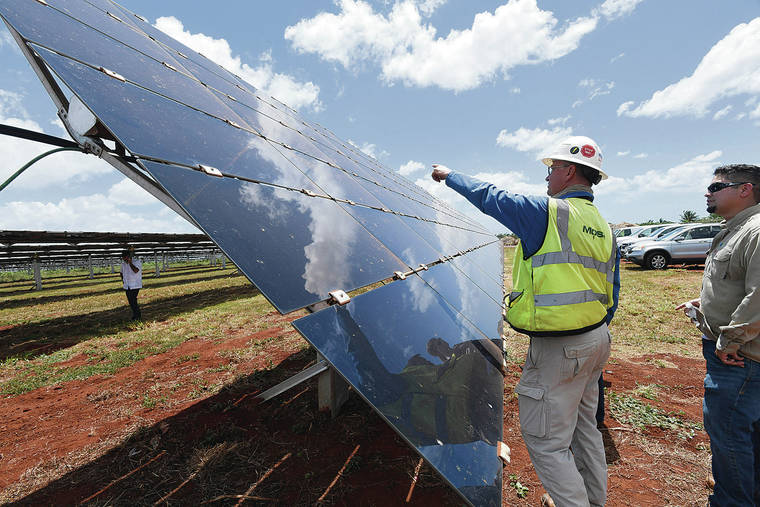
BRUCE ASATO / SEPT. 10, 2019
Nearly 110 megawatts (MW) annually will now come from: the 49MW Kawailoa Solar project on former North Shore sugar cane land; the 45.9MW Waipi‘o Solar on former cattle pasture; and the 14.7MW Mililani Solar II on former pineapple land, pictured.

Select an option below to continue reading this premium story.
Already a Honolulu Star-Advertiser subscriber? Log in now to continue reading.
Two events this week starkly, and quite literally, revealed both the bright and blustery sides of Hawaii’s renewable energy future.
The bright: Three solar-powered projects by developer Clearway Energy Group went online to generate enough electricity for about 18,000 homes. Nearly 110 megawatts (MW) annually will now come from: the 49MW Kawailoa Solar project on former North Shore sugar cane land; the 45.9MW Waipi‘o Solar on former cattle pasture; and the 14.7MW Mililani Solar II on former pineapple land. The projects will contribute 3-4% total to the state’s roughly 27% renewable energy portfolio, a solid stride toward Hawaii’s mandate of 100% renewable energy by 2045.
However, headwinds are picking up against Na Pua Makani Power Partners’ wind farm project in Kahuku, which proposes to generate 25MW yearly at half the cost of burning oil. First proposed 10 years ago, the project has weathered a state Land Board contested-case hearing, the decision of which is being appealed. This week, area residents protested and environmental group Life of the Land filed opposition to the project. But it’s hoped that mitigations can be achieved. Clearly, give-and-take compromises will be vital as more, larger-scale projects are proposed over the next two decades.
Hawaii also will need to pursue new technologies that are less obtrusive and more efficient. In fact, even as this week’s projects were being lauded, two more sun projects are underway for 2021 completion: Mililani Solar I and Waiawa Solar Power, totaling 75MW of solar — plus notably, 300MW hours of battery storage, a welcome feature that this week’s solar trio doesn’t have.

